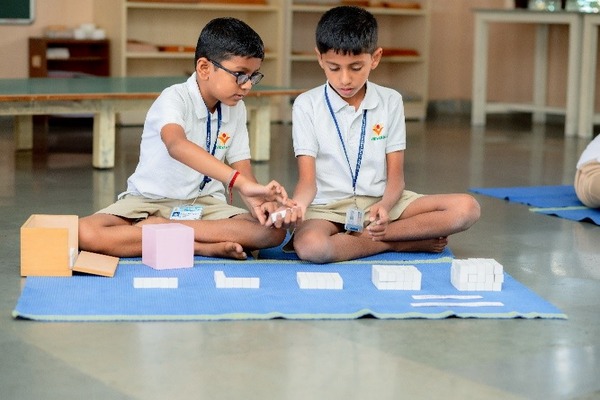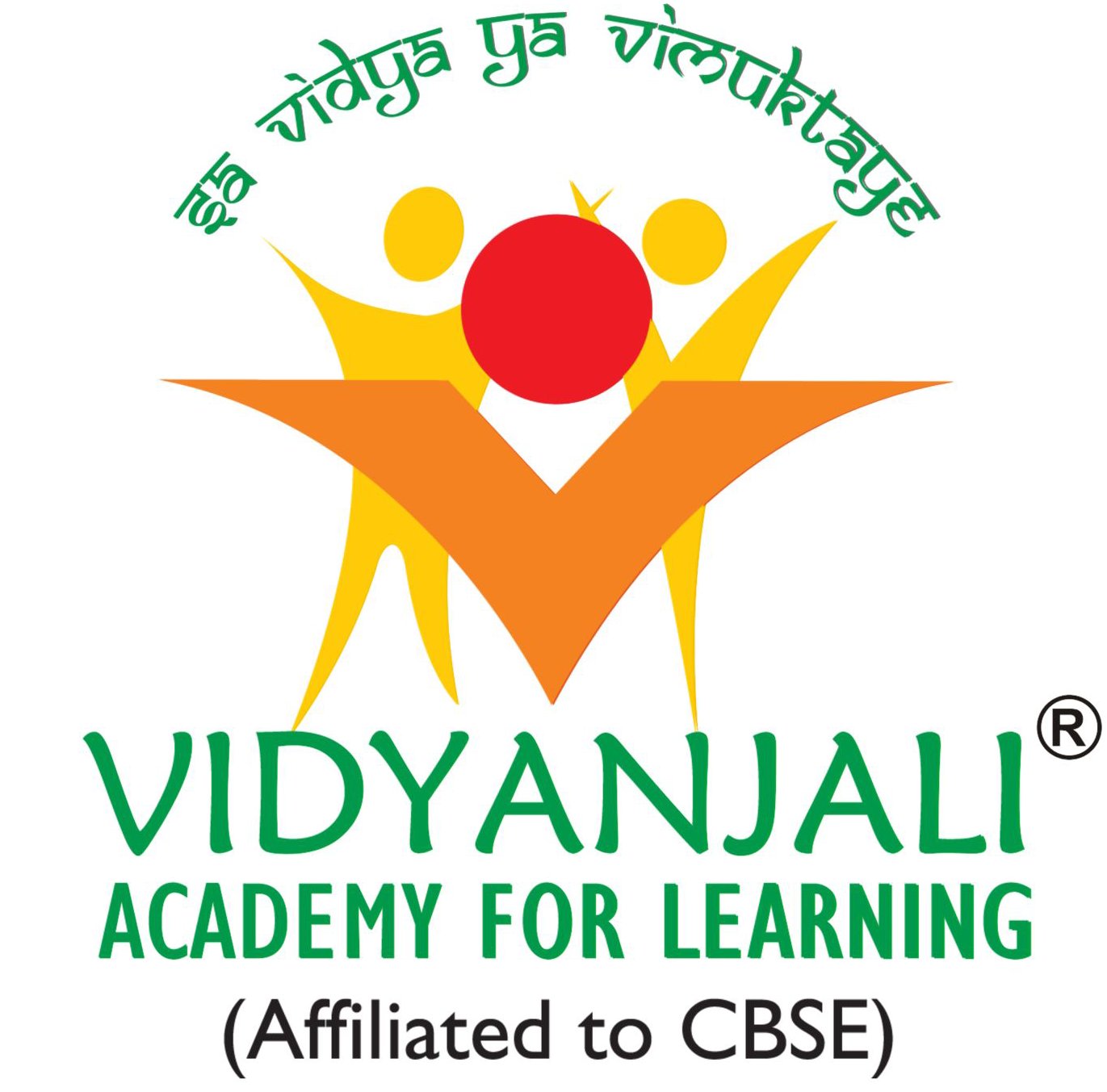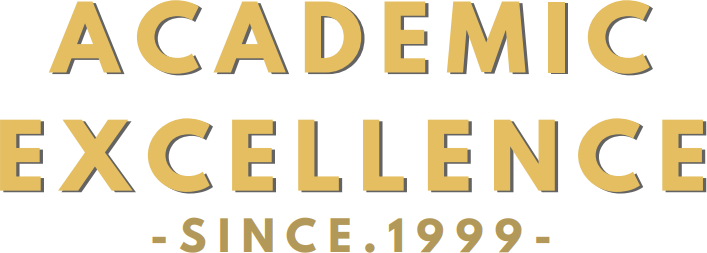
Choosing
the best education system for their child is one of the most important
questions parents ask themselves when planning for their child’s future. This
is because education determines how a child learns, how social skills are
ingrained in them, and the world view of the child. All of this influences
their academic growth as well as personal development. In most cases, parents
tend to select one of the two well-known systems, which are Montessori and, in
some cases, traditional education. Each of them has unique systems of
philosophies and paradigms for growing and teaching children, thus making
different experiences for the learners.
Vidyanjali
Academy uses the Montessori method of education, which does offer a relatively
better education system than the conventional one. In this teaching style,
students do not just passively listen to the instructor, rather, they take part
in the process of learning according to their preferences.
The
present article seeks to compare these systems so that parents to make the right
decision depending on their children’s requirements.
What is Montessori Education?
Montessori
education is an innovative method of instruction that was devised in the early
20th century by Dr. Maria Montessori, an Italian physician and educator. Dr.
Montessori believes that children will learn best by handling things, being
driven by curiosity, and self-reflective study. It's completely different from
the traditional forms of education, which are based on rigid curricula and
strict routines but rather encourage independence, curiosity, and respect for
the child's natural pace of learning.
Key Principles of Montessori Education
Montessori
education is based on principles such as respect for the child, self-paced
learning, and hands-on activities. Following are the seven key principles of
Montessori education:
●
Child-Centred Learning: Each child is
encouraged to explore based on their interest and pace.
●
Prepared Environment: The classroom is
set up practically, and resources and tools are made available to promote
learning by doing.
●
Auto-Education (Self-Education): Children
learn independently through exploration and interaction, developing
self-discipline and motivation.
●
Observation-Based Teaching: Teachers act
as guides, observe each child’s progress and offer support based on their
needs.
●
Freedom Within Limits: Children have the
freedom to choose activities within set boundaries, which develop
responsibility and self-regulation.
●
Mixed-Age Classrooms: Multi-age
classrooms allow younger students to learn from older peers and encourage
social learning.
●
Intrinsic Motivation: Montessori emphasizes
self-driven learning, where children pursue interests for personal fulfilment
rather than external rewards.
Overview of Montessori Classrooms and Materials
In a
Montessori classroom, children work independently at their own pace on topics
of interest. The room is arranged to support this process, with materials that
encourage hands-on activity in a variety of subjects.
These
materials are carefully designed to promote independent learning that focuses
on practical life skills, sensory exploration, and problem-solving. The setup
encourages children to explore subjects at their own pace and promotes deep
understanding and engagement. The teacher, often regarded as a
"guide," plays a subtle role, directing children only when necessary.
This makes the student independent, critical, and confident about himself.
What is Traditional Education?
Traditional
education is the most widely used system in schools worldwide. It follows a
structured, teacher-led model where students follow a standardized curriculum.
The traditional system has been used for centuries, with roots in classical
education models that emphasize discipline and academic achievement. It
typically prioritizes direct instruction that prepares students for exams and standardized
assessments.
Key Principles of Traditional Education
The
traditional approach centers around teacher-led instruction, where students
learn through lectures, reading, and structured assignments. It often follows a
set curriculum with specific goals and benchmarks that students must meet. This
structure helps students build foundational knowledge in subjects like math,
science, and language arts.
Overview of Traditional Classrooms and Materials
In a
traditional classroom, students are usually grouped by age, and each child
receives the same instruction as their peers. Teachers assess progress using
textbooks, workbooks, and exams. The classroom environment emphasizes order and
discipline, often with desks arranged in rows. This setup encourages students
to focus on individual tasks and follow a structured schedule.
Key Differences Between Montessori and Traditional Education
The main
difference between Montessori and traditional education is the teaching method.
Montessori education focuses on self-directed learning, which means that
children select their activities based on their interests and work either
independently or in small groups.
Traditional
education is teacher-led instruction where the teacher dictates the pace and
structure of lessons. Montessori students follow individualized learning plans
tailored to their strengths, while traditional students follow a standardized
curriculum.
The
following points compare Montessori and traditional education further to help
you understand the key differences between the two:
Classroom Environment
Montessori
classrooms are multi-age, allowing for age-inclusive learning. Such an
environment promotes peer learning and mentoring. Traditional classrooms,
however, use age grouping, where each grade level functions with a pre-set
curriculum.
Montessori
classrooms are also arranged according to a carefully selected collection of
materials designed to promote exploration. Traditional classrooms are also
organised with pupils seated facing the teacher because they tend to be
structured more towards lecturing.
Role of the Teacher
In
Montessori, the teacher acts as a "guide," observing and supporting
the student rather than leading instruction. They intervene only when
necessary, giving children room to explore independently. Teachers are more
central in traditional settings, leading lessons, managing the classroom, and
providing instruction. This difference impacts how students develop
independence: Montessori students are encouraged to solve problems on their
own, whereas traditional students often rely on teacher guidance.
Assessment Methods
Observational
Assessment is the assessment method that involves looking at a child’s work overtime
to look for progress within the work. Performance is assessed as well in
traditional education. However, there is a mark allocated for every performance
and standard tests evaluate this performance. It is this method that provides
an excellent way of recording one’s success in academics; however, a ‘score
card’ is not the aim of the Montessori method. It is even contrary to one’s
approach to competition/comparison of scores and providing ranking.
Social and Emotional Development
Montessori
education strongly emphasizes social skills and emotional intelligence. The
multi-age setup encourages peer interactions and empathy, allowing younger
students to learn from older peers. Traditional education, however, often
fosters a more competitive environment where students are motivated by grades
and rankings. While both systems help develop social skills, Montessori’s
emphasis on collaboration offers a different kind of social learning.
Parental Involvement
Montessori
education views parents as partners in the learning process, fostering close
communication between home and school. Parental involvement is encouraged
through regular feedback and collaboration. In traditional education, parent
involvement often revolves around supporting homework and attending meetings.
Montessori schools emphasize a home-school connection that reinforces
consistent learning principles.
Cost and Accessibility
Montessori
schools tend to be more expensive than public schools and private ones. This is
due to the materials used and the training of the teachers involved, as well as
the smaller class size, which is not easy to implement. Moreover, access is
another issue because there are fewer Montessori schools than regular schools.
Adaptability to Different Learning Styles
Montessori
education also provides means for different learning styles, allowing children
to learn by searching and performing some work. This is an advantage,
especially for children who are strong in certain aspects and weak in others.
On the other hand, traditional education operates under the same principle,
where the same methods are used on all students regardless of whether some
would like other ways of learning how to tackle certain situations.
Benefits of Montessori Education Over Traditional Education
Montessori
education fosters a love of lifelong learning and creativity. Children in
Montessori classrooms develop independence, problem-solving skills, and
critical thinking abilities. The prepared environment and self-directed
activities encourage curiosity and innovation. Unlike traditional systems,
Montessori’s approach helps children build a foundation for adapting to new
challenges and exploring their interests.
Criticisms of Montessori Education
Some
critics argue that Montessori’s flexible curriculum may lack structure, which
could make it challenging for students to transition to more structured
academic settings. The emphasis on self-directed learning may not suit all
children, particularly those who benefit from clear guidance and structure.
Additionally, limited availability and higher costs make Montessori education
inaccessible for many families.
Benefits of Traditional Education Over Montessori Education
Traditional
education provides a more structured curriculum that clearly establishes
academic goals that are easily measurable and trackable. This system is based
on standardised testing, which provides certain benchmarks that can help
parents measure academic achievements for themselves and their children.
Traditional education also focuses on discipline and routine, thus preparing
children for academic environments of the future, where clear expectations and
accountability take precedence.
Criticisms of Traditional Education
One
criticism of traditional education is its rigid curriculum, which may not cater
to individual learning needs. Students who struggle with the standardised
approach may find it difficult to keep up. Additionally, the focus on testing
can create stress and limit creativity, as students may prioritise grades over
a genuine interest in learning.
Which Education System is Better for Your Child?
Choosing
between Montessori and traditional education depends on your child’s unique
learning style. Children who thrive in a self-paced, exploratory environment
may benefit from Montessori education. Those who prefer structured guidance and
clear academic goals may excel in traditional settings. Consider factors such
as your child’s personality, social needs, and long-term educational goals when
making this decision.
How to Transition Between Montessori and Traditional Education
Transitioning
between Montessori and traditional education can be challenging for children
due to the different teaching methods and classroom environments. In the case
of Montessori transitioning to traditional schooling, introducing more
structure and routine at home can help a child adapt. However, if a child is
transitioning from traditional schooling to Montessori, a parent can encourage
self-directed and choice-based activities. Effective open communication with
teachers can ease the transition process for the child since the teachers can
provide advice on how best to help the child adapt.
Final Thoughts
Both
Montessori and traditional education systems offer valuable approaches to
learning, each with unique strengths and challenges. Montessori emphasizes
independence, creativity, and self-motivation, while traditional education
provides structure and measurable academic benchmarks. Parents should consider
their child’s individual needs, personality, and learning style when choosing
the most suitable education system.
Parents
who want their children to be prepared for real-world challenges from the first
few years of their development can consider enrolling in Vidyanjali Academy.
Our Montessori approach is renowned in the region and has prepared many
students over the years to achieve great success in life. Reach out to us at info@vidyanjali.in
and get all your queries answered related to admission or school visits.
Frequently Asked Questions (FAQs)
1.
What age is best to start Montessori education?
Montessori
education is normally started as early as 2.5 to 3 years old. In the early
years, children are most likely to absorb the things they see and are exposed
to, which makes this method of teaching suitable and effective. Moreover,
beginning at a young age gives them the chance to grow through Montessori’s
developmental approach.
2.
Can a child thrive in Montessori if they are already in a
traditional school?
Yes,
children can transition successfully from a traditional school to Montessori.
The flexible, child-centered Montessori environment often helps them adapt quickly.
Teachers provide guidance and support to ease the adjustment and foster
independence.
3.
Montessori education only for gifted children?
No,
Montessori education is not only for gifted children. It suits various learning
styles and abilities. The method encourages every child’s unique strengths and
learning pace, benefiting all learners, not just those identified as gifted.
4.
How do Montessori schools handle homework?
Montessori
schools rarely assign traditional homework, especially in early grades.
Instead, they encourage children to practice skills at home in real-life
contexts. Older students may have small projects, which are given to them for
promoting responsibility rather than rote assignments.
5.
What are the long-term impacts of Montessori vs. traditional
education on a child’s career and life?
Montessori education teaches children self-discipline, problem-solving, and lifelong learning skills, which many students carry into adulthood. Traditional education includes structured learning, which can develop strong study habits. Both systems offer valuable life skills in unique ways. However, children who start with Montessori achieve better and quicker life goals.



